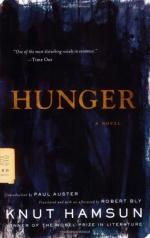|
This section contains 1,184 words (approx. 4 pages at 300 words per page) |

|
by Sylvia Nasar
About the author: Sylvia Nasar is a writer for the New York Times.
The world still thinks of famine the way that Thomas Malthus did, as Mother Nature’s revenge on hapless humanity. In fact, famine is anything but what the dour English economist called “nature’s last most dreadful resource.” As in Somalia in the early 1990s, it is often a man-made disaster, an avoidable economic and political catastrophe.
The kind of famine that struck there—created by clan warfare, not by crop shortages or endemic poverty—is the rule, not the exception, according to economists who have studied famines in Africa, Asia and Europe.
Enough to Go Around
World food production has kept well ahead of population growth. Drought or flood does often precede famines. But...
|
This section contains 1,184 words (approx. 4 pages at 300 words per page) |

|




